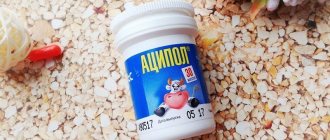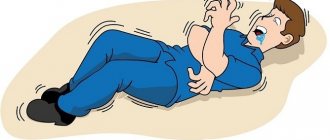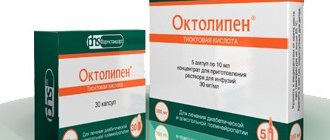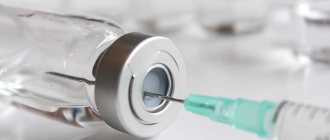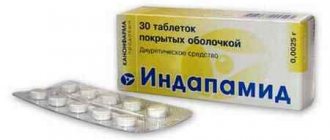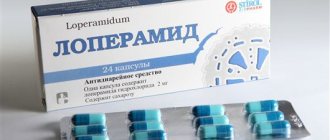04/16/2018 Olga Migunova 3 comments
Diarrhea is a disorder of the intestines, in which multiple loose stools occur. The popular name for the disease is diarrhea. This pathological condition prevents the absorption of useful substances due to the rapid movement of products entering the body through the intestines. Knowing what you can eat during diarrhea and what you can’t, you can alleviate the condition for both adults and children and avoid mineral and vitamin deficiencies.
Causes of diarrhea
Causes of diarrhea:
- intoxication of the body caused by low-quality or stale products;
- penetration of viral and bacterial infections into the body, the appearance of which is accompanied by diarrhea, vomiting, and increased body temperature;
- unstable emotional background – intestinal disorders can be triggered by frequent stress;
- use of certain medications;
- dysbacteriosis;
- parasitic pathologies;
- benign formations on the intestinal walls, including polyps;
- allergic reaction of the body;
- gastrointestinal pathologies.
Causes of diarrhea
Diarrhea occurs for various reasons. It usually occurs due to poor diet, poisoning of the body and some infectious diseases that affect the condition of the intestines.
Most often, a diet for upset stomach and intestines is prescribed depending on the cause of loose stools. Here are the main reasons that cause diarrhea:
- heavy food, overeating. It most often causes diarrhea;
- consumption of vegetables, soups, liquid foods, dried fruits, such as dried apricots or prunes;
- individual intolerance to some components;
- bowel irritation;
- mild food poisoning;
- intestinal dysbiosis;
- pancreatitis;
- use of sweeteners;
- use of medications and laxatives;
- gastritis and intestinal diseases;
- stomach ulcer due to Helicobacter pylori bacteria;
- in women – pregnancy, premenstrual syndrome and hormonal imbalance;
- poor quality and irregular food;
- severe degree of toxin poisoning.
If diarrhea is not caused by acute poisoning or intestinal diseases, then with proper nutrition it passes quickly, without causing additional unpleasant symptoms.
In such a situation, special nutrition for diarrhea in an adult is not needed: it is enough to consume liquid and absorbent agents , for example, activated carbon, to remove all the unpleasant symptoms.
If diarrhea does not go away and is accompanied by other symptoms (dizziness, nausea, vomiting), you need to urgently change your diet.
Principles of nutrition for diarrhea
Compliance with certain nutritional principles is part of the complex therapy of pathology. During periods of frequent loose stools, it is important to reduce the load on the intestines that it receives while eating. This will help him recover and begin to function normally.
Dietary rules for acute intestinal disorder:
- take food in small portions, no more than 200 g at a time, but several times a day;
- remove foods that irritate mucous membranes from the diet;
- the last meal should take place 4 hours before bedtime;
- do not consume food that causes increased gas formation;
- reduce the amount of foods containing fats and carbohydrates without disturbing the overall energy balance;
- do not fry or bake foods, only boil and steam are allowed;
- You should not eat foods that cause fermentation in the intestines, otherwise the urge to stool will become more frequent;
- do not use spices and seasonings for cooking, as they irritate the intestinal mucous membranes;
- remove products with a choleretic effect from the menu;
- eat food warm, since the intestinal mucous membranes react poorly to cold and hot food;
- give preference to dishes with puree, liquid and semi-liquid consistency; solid foods injure the intestines, which leads to aggravation of the situation;
- It is important to maintain a drinking regime - it is recommended to drink 250-500 ml of liquid during meals.
Why is diarrhea dangerous?
Diarrhea in adults is not only a physical discomfort, but also harmful to the body. Frequent bowel movements are dangerous for two reasons:
- Removal from the body of trace elements and nutrients that are necessary for the normal functioning of the body.
- Disturbance of the intestinal microflora, which leads to even greater gastrointestinal disorders.
They may be a sign of a serious illness. The disease is diagnosed by a qualified doctor.
Diarrhea can lead to serious complications, so you should not delay making a diagnosis. Before that, a diet will help with diarrhea in an adult.
What can you eat if you have diarrhea?
On the first day of pathology, a strict diet is followed. In the absence of appetite, you are allowed to completely refuse to eat, but at the same time observe the drinking regime. After each visit to the toilet, it is recommended to drink a glass of liquid. If your appetite has not disappeared, then it is recommended to eat only approved foods.
Here's what you can eat if you have diarrhea on the first day of the disorder:
- rice in the form of porridge, but without oil, or a decoction prepared from rice - such a product has a strengthening effect and can stop diarrhea on its own without additional use of medications;
- porridges cooked in water without adding butter;
- steamed egg white omelette;
- crackers made from white bread;
- apple puree or jelly.
Lean meat and low-fat fish are what an adult can eat if they have diarrhea on the second and third day of pathology. It is allowed to prepare broths from the products. It is also recommended to include white chicken meat in the diet, but without skin. You can't eat anything fatty. Food can be salted, but do not add any spices or seasonings.
Doctors also advise these days to eat cottage cheese with zero mass fraction of fat without sour cream. Eating foods containing protein compensates for its deficiency, which is lost during diarrhea.
Fresh seasonal vegetables and herbs are what you can eat if you have diarrhea after the third day of pathology. They must be washed well before use, otherwise the patient’s condition will worsen. Vegetables should not be eaten fresh. Experts advise boiling, steaming or baking them. Zucchini and potatoes are first introduced into the menu, then other vegetables are gradually added.
For diarrhea, the menu should contain foods that contain potassium - potatoes, bananas, baked apples. They replenish the deficiency of this mineral caused by diarrhea.
Sample menu
Meals should be taken six times a day. Recommended menu for 1 day:
- First breakfast: rice boiled in water, a slice of stale white bread, rosehip infusion.
- Second breakfast: compote made from dried fruits.
- Lunch: cream soup with meat, lean meat meatballs, buckwheat with water, dried fruit compote.
- Afternoon snack: unsweetened cottage cheese.
- Dinner: steamed meatloaf with baked vegetables, rosehip infusion.
- Second dinner (before bed): blueberry jelly.
Cooking Rules
Food should be steamed, baked or boiled. Fried foods are strictly prohibited for diarrhea. It is recommended to grind all products to a homogeneous consistency. Such actions are necessary so that large particles do not damage the inflamed intestinal walls.
Porridge should be cooked in water. A small amount of milk can be added to them, but provided that the body reacts normally to dairy products.
Only fresh products are used to prepare dishes. It is unacceptable to add spices and other components that irritate the gastrointestinal tract.
What should you not eat if you have diarrhea?
In case of acute intestinal disorder, it is recommended to avoid consuming foods that cause increased gas formation, bloating, and those that irritate the intestinal mucous membranes.
List of foods prohibited for consumption during diarrhea:
- liver, lung, kidneys and heart;
- vegetables - white cabbage, beets, radishes and other vegetables that provoke fermentation in the intestines;
- legumes - peas, beans, since these products increase the amount of gas in the intestines;
- marinades and canned food;
- smoked meats and semi-finished products;
- meat, poultry and fish of any kind (later these products are included in the menu);
- sweets, confectionery;
- fresh fruits and berries;
- bakery products with the exception of white bread crackers;
- mushrooms of any kind;
- nuts.
Diet No. 4
Diet (table) No. 4 was developed by nutritionist M.I. Pevzner. This is one of the 15 diets he developed, recommended for dietary nutrition in the treatment of dysfunctions of the gastrointestinal tract. Table No. 4 helps reduce painful symptoms of intestinal diseases and inflammatory processes, eliminates rotting and fermentation in the intestines.
Main nutrition rules for diet No. 4:
- 6 meals a day, consisting of mucous, liquid, puree-shaped dishes;
- “boiled” and steam cooking methods;
- Hard, thick, as well as cold and hot foods are excluded.
Dietary table No. 4 includes:
- Cereals - buckwheat, oatmeal, rice, semolina, cooked in water;
- Vegetables - beets, potatoes, pumpkin, grated carrots as an additive to soups;
- Berries and fruits - ground into puree, as well as in the form of compote, jelly and jelly;
- Meat—beef, chopped veal in the form of meatballs and cutlets;
- Chicken egg as an additive to soups;
- Fish - low-fat varieties in the form of meatballs and cutlets;
- Soups made with lean fish or chicken broth with the addition of slimy rice;
- White bread crackers;
- Drinks made from dried berries. Juices diluted with water. Tea and cocoa brewed with water.
Products not included in the menu of diet No. 4 are prohibited for consumption.
Also excluded:
- carbonated and cold drinks;
- alcohol;
- grape and plum juices;
- milk and kvass.
Nutrition in accordance with diet No. 4 lasts one and a half weeks. By adhering to diet No. 4, already in the first week the signs of inflammation of the intestinal walls decrease and fermentation in the intestines decreases.
You should exit diet No. 4 gradually.
Approximate menu for diarrhea for one day
So, an approximate menu for diarrhea for one day:
- Breakfast: rice porridge or steam omelette, tea.
- Snack: ripe banana or baked apple, tea or infusion of chamomile, rose hips.
- Lunch: soup with meatballs or steamed cutlets, compote or tea.
- Snack: jelly or compote, white bread or crackers.
- Dinner: buckwheat porridge with steamed fish, chamomile infusion or tea.
Allowed and prohibited drinks for diarrhea
It is important to know not only what you can eat when you have diarrhea, but also what is and is not recommended to drink. Rehydrating solutions have a positive effect on the intestines in this pathological condition, normalizing the salt balance. To prepare them, use Gastrolit or Regidron powder, which is available over the counter in pharmacies, but before use you should consult a specialist.
Allowed drinks include any liquids that have an astringent effect:
- drinks made from dogwood, apples, blueberries, bird cherry, pomegranate peel and pear;
- compotes made from dried fruits;
- Strongly brewed green and black teas without added sugar.
During this period it is also recommended to consume:
- natural vegetable and fruit juices;
- jelly;
- mineral still water.
During the period of intestinal disorders the following are prohibited:
- alcohol;
- grape juice;
- store-bought juices;
- black coffee;
- milk and fermented milk drinks.
Prohibited Products
There is a list of foods that are strictly prohibited for adults with diarrhea. The ban is due to the fact that they can cause a deterioration in the patient’s condition if the diet for diarrhea is not followed. What not to eat if you have diarrhea:
- Spicy, fatty, fried foods;
- Carbonated drinks;
- Butter pastries, rye bread;
- Canned food, smoked meats, sauces;
- Whole milk;
- Legumes.
What foods are restricted?
There is no strict ban on these products, but, depending on your health condition, they can also negatively affect the gastrointestinal tract and delay the treatment of diarrhea. What not to eat if you have diarrhea if the condition does not improve in a few days:
- Semi-finished products;
- Caffeinated drinks;
- Raw fruits and vegetables;
- Sweets, pure sugar;
- Fresh bread;
- Fatty broth;
- Pasta.
In general, it is worth limiting the consumption of rough food and dry food; what you can eat if you have an upset stomach are warm dishes with a soft consistency.
What to feed a child with diarrhea?
If your child has an intestinal disorder, you should consult a doctor.
You cannot treat the pathology yourself, as complications arise and one of them is dehydration. The doctor diagnoses the cause of the pathology, and then prescribes the necessary therapy. The specialist will advise what to feed the child with diarrhea. The diet is similar to that of an adult, but it is tailored to the child’s age, weight and individual characteristics.
If diarrhea occurs in an infant and the mother feeds him breast milk, then feeding continues as usual, but doctors recommend reducing the length of time the baby stays near the breast, while increasing the number of feedings.
For babies who consume formulas adapted for breast milk, doctors advise halving the amount of servings and increasing the number of meals. A specialist can prescribe a fermented milk mixture for your baby, which has a therapeutic effect.
For children who have been introduced to complementary feeding, doctors recommend stopping it and switching to their previous diet. New foods often cause diarrhea in children, and children's condition returns to normal when they are removed from the diet.
We must not forget about the drinking regime. Even infants are advised to give warm water between meals. This will help avoid dehydration. Drinking regime is also important for older children. They can be given not only water, but also compotes, juices, with the exception of grape juice, drinks made from berries, and tea.
Diet No. 4 - a method of treating diarrhea
Diarrhea is a consequence of intestinal dysfunction; such pathologies are regulated by dietary table No. 4. A diet for diarrhea solves the following therapeutic problems:
- regulates the nutrition of patients with digestive disorders;
- reduces inflammatory processes in the irritated intestinal mucosa;
- stops fermentation, gas formation, rotting in the digestive tract.
Features of nutrition during diarrhea - reducing calories to 2,000 kcal/day, and the amount of fat (up to 70 g) and carbohydrates (up to 250 g) is extremely reduced, the amount of proteins remains within normal limits. Daily salt intake is 6-10 g, and liquid intake is at least 1.5-2 liters per day. Food processing methods are gentle on the gastrointestinal tract; all foods for diarrhea are steamed, boiled, and pureed. It is recommended to eat dishes cooked in water. Any intestinal irritation should be excluded, so food should be warm (30-35 ° C), without any seasonings. The regimen of frequent and small meals must be strictly observed so as not to overload the injured parts of the gastrointestinal tract. The amount of food eaten at one time should be reduced by 2 times. If you have diarrhea, you need to drink a lot, but fasting is still not recommended.
Features of nutrition after diarrhea
In the first seven days after diarrhea, it is recommended to eat fish soups made from low-fat fish, noodles with poultry, and oven-baked potatoes. It is also allowed to eat pasta, porridge with milk with the addition of butter, and cottage cheese with zero mass fraction of fat.
In the first days, only white bread is allowed to be consumed, and bread made with rye flour is allowed to be consumed a week and a half after the pathology. Vegetables can only be eaten boiled, fruits can be eaten without peeling. You can’t create a daily diet without including lean meat, poultry and lean fish.
It is recommended to switch to your usual diet a week after diarrhea, but you should not load the intestines again. Meals remain fractional for some time. If the body normally accepts the previous diet, it means that the condition of the intestines has stabilized.
Diarrhea in women who are breastfeeding
Sometimes young mothers experience diarrhea during lactation. Why the stomach growls and diarrhea occurs has been covered in detail here.
There are several reasons:
- often irritable bowel syndrome (associated with stress after childbirth, lack of sleep);
- excessive consumption of foods that tend to loosen stools (prunes, beets, kefir);
- allergic reactions;
- infection.
It is important to remember that diarrhea leads to dehydration, and a lack of fluid negatively affects lactation, reducing the quantity and quality of breast milk.
What should breastfeeding women eat if they have diarrhea?
- rice broth;
- any well-cooked porridge in water without oil;
- white bread croutons;
- vegetable soups;
- boiled eggs, steamed omelet;
- low-fat varieties of fish and steamed meat.
Be sure to drink 2-3 liters of fluid per day. This could be water, tea, dried fruit compote, berry jelly (taking into account the likelihood of an allergic reaction of the baby).
Infusions of chamomile, fennel seeds and dill water help fight diarrhea, but also additionally stimulate lactation and improve the taste of breast milk.
When is a doctor needed?
You should consult a doctor if your child has diarrhea. As for adults, they often self-medicate and believe that diarrhea is not a pathology, but a simple intestinal disorder that can be cured at home.
Even an adult needs medical help for diarrhea if the following symptoms are observed:
- blood, mucous impurities or pus are observed in the stool;
- the condition does not stabilize within three days, but only worsens or remains at the same level;
- stool takes on a black tint - this happens when internal bleeding occurs in the gastrointestinal tract;
- sharp pain in the abdominal area indicates the development of gastrointestinal pathology, which in some cases requires surgical intervention;
- an increase in body temperature that lasts more than three days.
A doctor's help is also required if signs of dehydration appear. Elderly people definitely need to see a specialist. Elderly people who self-medicate are at risk of serious complications.
What is diarrhea
Diarrhea (colloquially called diarrhea) is a change in the appropriate consistency of stool.
Although this pathology is common (3-5% of the population), there are a lot of concomitant diseases for differential diagnosis, their sum reaches several hundred nosologies.
There are three types of diarrhea: liquid, fatty (malabsorption) and inflammatory etiology (with the presence of blood and pus in the stool).
However, not all cases of diarrhea strictly fit into these categories - there are combined cases. Liquid diarrhea is divided into osmotic (water retention due to poor absorption of nutrients), secretory (decreased water absorption) and functional (intestinal hyperkinesia).
A syndrome characterized by the acute development of watery diarrhea without blood (three or more loose stools per day).
We limit the diet for intestinal colitis with diarrhea
Dietary therapy for inflammation of the large intestine with symptoms of stool disorder is similar to nutritional therapy for nonspecific ulcerative colitis.
Its principles are to adequately and safely reduce plant fiber in the daily diet.
The diet includes:
- dairy products;
- grain processing products;
- meat and other proteins;
- fruits;
- vegetables;
- fats and sauces.
www.healthline.com
Drink
Having figured out what to eat, you need to consider drinking problems. You need to drink a lot to avoid dehydration. Mineral and ordinary water will quench your thirst and replenish your water balance. Mineral water is chosen alkaline, without gases. Teas – chamomile, with rosehip. Rehydration medications are prescribed for dehydration. Rehydron is taken orally, 1 packet per liter of water. Take 2-3 liters per day. To avoid dehydration, drink a glass of water after bowel movement. Take a decoction of flax seeds - an effective folk remedy.
Principles of dietary nutrition
Nutrition for diarrhea should primarily be aimed at maximizing intestinal unloading and eliminating fermentation processes. For this purpose, reduce the calorie content of food and limit the intake of carbohydrates and fats in the diet.
The diet for diarrhea includes the following recommendations:
- frequent small meals every three hours. You should consume about half the usual serving;
- exclusion of foods that irritate the intestines: too cold or hot food, spices, seasonings, solid foods, alcohol;
- refusal of choleretic food;
- exclusion of foods that enhance fermentation processes: legumes, fresh bread, pastries, white cabbage;
- balanced diet. You should not put your body in strict limits, especially when it comes to eating protein foods;
- It is undesirable to feel hungry;
- drink enough fluids;
- you need to eat energy-rich food;
- dishes are served in semi-liquid pureed form;
- products are steamed or boiled.
Eating during diarrhea should be strictly at a certain time
What foods are allowed for IBS with diarrhea?
If you have irritable bowel syndrome (IBS), the last thing you want is to eat something that will make your symptoms worse.
Certain foods are known to trigger this syndrome due to their effects on the digestive system.
However, each person with IBS responds differently to the same foods. Therefore, you may be able to digest foods that are contraindicated for your friend with IBS.
Only by keeping a personal food diary and tracking how you feel after using them can you be sure of what and how it affects your digestive system.
Fatty food. High-fat foods can increase the force of intestinal contractions through the gastrointestinal reflex.
If you have a sensitive digestive system, do not eat fatty meats or fried meats:
- pizza;
- sausages;
- french fries;
- fried chicken or fish;
- foods with rich or creamy gravy;
- steaks and burgers (for many, red meat causes IBS symptoms).
This doesn't mean cutting out fat completely. Nuts or fish may contain fats that may benefit your symptoms.
Dairy products. A large number of people suffer from a condition known as lactose intolerance.
The lactose contained in such products can cause bloating, intestinal cramps and diarrhea. These products include: milk, cheese, ice cream, etc.
However, you may find that you tolerate some low-lactose cheeses well, such as:
- Bree;
- Camembert;
- Mozzarella;
- Parmesan, etc.
Wheat. Although a high-fiber diet is essential for overall health, certain foods can pose problems.
For people with celiac disease, eating a protein called gluten (wheat, rye, barley) causes the immune system to attack the small intestine, causing serious health problems.
Even if you don't have celiac disease, you may have problems eating some foods made with gluten-containing grains because they contain fructans, which are short-chain carbohydrates (oligosaccharides, monosaccharides, etc.).
Unfortunately, gluten is found in pasta, bread and other baked goods. Luckily, it's much easier to find gluten-free products these days.
www.verywell.com
Loss of fluid: how to replenish?
Losses from diarrhea are enormous - up to several liters per day. Along with water, microelements are also washed out of the body; in case of severe diarrhea, water is replaced with decoctions or pharmaceutical solutions - citroglucosolan, rehydron. You can make your own infusion: take 1 liter of water, half a teaspoon of soda, 1 tsp. salt, a glass of orange juice, 4 tablespoons of sugar. What should an adult drink if he or she has diarrhea?
Sorbents include:
- Activated carbon, it is taken at the rate of 1 tablet per 10 kg of patient weight.
- White clay.
- Calcium carbonate.
- “Venter”, “De-Nol” (bismuth salts) are not absorbed in the intestines and contribute to the compaction of feces.
- "Smecta". Instructions for use for diarrhea should be studied. It is dissolved in water. The drug is taken up to 5 times a day.
- “Polyphepan”, “Bilignin”, a tablespoon is shaken in a glass of water, they do not dissolve, because they are wood derivatives.
- “Attapulgite”, it can be used only for 24 hours, it is in tablet form, you can take 15 tablets per day.
- Cholestyramine is used only if there are problems with the gallbladder, because It is a resin that binds bile acids. Diarrhea in this case is called hologenic.
Sorbents are designed to absorb and remove toxins, viruses, and gases. You should not abuse them if you are allergic to proteins or any other products; in this case, it will be enough to refuse these products.
I bind everything to sorbents - both food and medications, so you should take breaks between taking other medications. What else should you drink if you have diarrhea?
The effect of diarrhea on the human body
At its core, diarrhea is the remains of undigested foods in the liquid environment of the intestines. If a person needs to defecate more than 3–5 times a day, then he loses a large amount of water. Tissue dehydration occurs - a life-threatening condition. It contributes to serious complications, including death.
The negative impact of diarrhea consists of the following functional failures:
- excessive dryness of the mucous membranes and skin - they itch and crack;
- lack of urination – high risk of acute renal failure;
- decrease in body temperature and blood pressure – hypovolemic shock;
- increased heart rate;
- disturbances in the functioning of the liver - decay products are poorly excreted and further poison the entire body.
Since the human body consists of 2/3 water, a loss of even 15–20% threatens the full functioning of all tissues and organs, especially the brain. The severity of the condition directly depends on the age of the patient, the severity of diarrhea, as well as the timeliness of the treatment measures taken. A specialist will tell you what to eat if you have diarrhea when you seek medical help.
Symptoms of diarrhea
The symptoms of the disease are very pronounced and noticeable. Intestinal disorders create discomfort for the patient, prevent him from functioning normally in a social environment, and affect the physical and moral state of the whole organism. The main symptoms of diarrhea of varying degrees of complexity:
- frequent, loose stools;
- nausea;
- bloody impurities in the stool;
- increased body temperature;
- vomit;
- dehydration. Constant feeling of thirst, dry tongue, increased breathing, rare urination;
- constant, nagging, severe pain in the stomach.
Principles of nutrition
A diet after diarrhea in an adult consists of following some rules according to which the intestinal microflora can be normalized.
The basic rules include recommendations regarding food and how to eat it:
- thorough hand washing;
- use only clean dishes.
After diarrhea, an adult patient is not recommended to visit cafes and other catering establishments, as the quality of food may vary. At the same time, the gastrointestinal tract organs may react negatively to it.
A diet after diarrhea in an adult patient and a child requires the use of only high-quality products in the cooking process.
Expired fermented milk products are contraindicated. If you eat them, you can cause fermentation, causing a relapse of poisoning, diarrhea, and vomiting.
The danger of such a clinic for adults and children is dehydration. Therefore, patients’ efforts will be aimed at restoring water balance. The post-diarrhea diet should be prescribed by a qualified physician.
Meals should include greens and vegetables with fruits. In this case, possible products are doused with boiling water. This preventive measure will protect the adult patient from relapse of diarrhea.
If this rule is ignored, the treatment that the patient has already undergone will not be effective.
Return to previous diet
You should not return to your usual menu immediately after the symptoms of diarrhea have disappeared. The diet should not be stopped abruptly. This is especially true in cases where diarrhea lasted for a long time, and the body had time to wean itself off many foods.
The diet should continue for another 7-10 days after the symptoms of the disease have disappeared. Then fermented milk products can be introduced into the diet. You need to start with small portions - drink 200-250 g of milk, kefir or fermented baked milk per day. You can use yogurt. In this case, it is necessary to ensure that it does not contain preservatives. It is advisable to prepare yoghurts at home. A few days after introducing fermented milk products into the menu, you can eat pasta with mild sauces. After a few more days, it is permissible to eat fresh vegetables and fruits.
Symptoms and types of diarrhea in an adult
Diarrhea can vary in duration and method of its occurrence, so two main types can be distinguished:
- Chronic.
- Spicy.
As for the first option, it can last quite a long time for a person, on average about four to five weeks. This type of disease is considered more dangerous for humans. Most often, the cause of its appearance is exacerbations associated with chronic human diseases.
With chronic diarrhea, a person’s general condition worsens: severe weakness, nagging pain, and flatulence appear. In addition, the body becomes dehydrated, which means severe weight loss, deterioration of the skin and loss of huge amounts of vitamins, which can lead to problems with hair and teeth loss.
Diet recipes
Rice porridge with apples
Ingredients for 1 serving:
- rice - 4 tbsp. l;
- water - 300 ml;
- apple - 1/2 pcs.
Preparation:
- Rinse the rice and place in a small saucepan.
- Pour water and put on low heat.
- Cook, stirring occasionally, for 25 minutes. If necessary, add boiled water.
- Peel and seed half an apple and cut into cubes.
- Add the chopped apple to the rice and cook until it becomes soft. The cooking time depends on the type of fruit.
- Remove the finished porridge from the heat and grind through a sieve.
- Serve warm without sugar.
When preparing such a dish for a child, you should bake the apples in the oven, and only then add them to the porridge
Steamed egg white omelette
Ingredients:
- egg whites - 2 pcs;
- water - 75 ml;
- a little salt.
Preparation:
- Separate the whites from the yolks.
- Add a little salt and the required amount of cold boiled water.
- Beat with a whisk until smooth, but not until foamy.
- Pour the protein mass into a ceramic or silicone heat-resistant mold and cover with a lid. Instead of a lid, you can use food foil.
- Steam for 20–25 minutes. When preparing a diet omelette on the stove, you can use a water bath by boiling water in a saucepan and placing the mold in it so that the water level is level with the egg mass in the mold. Next, you should reduce the heat and cook the omelette until done.
Children can prepare such an omelet in silicone molds in the form of funny little animals, this will lift their spirits and increase their appetite.
Chicken and rice meatballs baked in the oven
Ingredients:
- chicken fillet - 100 g;
- rice - 1 tbsp. l;
- a little salt.
Preparation:
- Wash the fillet and grind through a meat grinder several times.
- Rinse the rice and boil in water until it becomes a viscous porridge.
- When the rice has cooled, combine it with minced meat and add a little salt.
- Knock out the minced meat and roll it into balls with your hands dipped in cold water.
- Place the meatballs in a heat-resistant dish and cover with cold water to 1 cm.
- Place in a cold oven and turn it on to 180 degrees.
- Bake for 25 minutes.
The same dish can be prepared in a slow cooker
Causes of indigestion
The stool becomes liquid if:
- the movement of products in the gastrointestinal tract is accelerated;
- the process of absorption of water and electrolytes is disrupted;
- the secretion of water and sodium in the intestinal lumen increases;
- mucus production increases.
The main causes of diarrhea (acute form) are:
- unboiled and contaminated water. Most often, by drinking tap water, we can cause a reaction in the body in the form of diarrhea;
- an allergic reaction of the body to any food or medication. Often diarrhea begins to torment us while taking antibiotics. Diarrhea in many instructions for the use of medications is prescribed as a side effect or symptom of an overdose;
- individual intolerance to lactose and other foods;
- infection in the intestines (viral, bacterial, parasitic). These causes include stomach flu, amoebiasis and food poisoning;
- stress, nervous breakdown, emotional instability and disorders.
The main causes of diarrhea (chronic form):
- rectal cancer;
- ulcers and other formations in the colon and rectum;
- chronic inflammation;
- ulcerative colitis;
- irritable bowel syndrome;
- Crohn's disease;
- malabsorption syndrome.
Why should you not give up foods that are rich in calcium when you have diarrhea?
Indigestion leads to constant loss of minerals. Calcium deficiency has a negative impact on the functioning of various organs.
A large amount of this element is contained in potatoes boiled in their jackets. You can replenish your calcium supply with bananas. Doctors advise eating 2 bananas per day if you have diarrhea. A diet for diarrhea will help cope with pathologies of the digestive system.
You should not give up salt, as it retains moisture in the body. Salty soups are especially useful for loose stools.
Getting rid of the disease: how to treat diarrhea at home
Wrong start
When starting to treat diarrhea, you should remember that frequent loose stools are not just an annoying nuisance, but a natural defense mechanism that is used by the body to get rid of pathogenic pathogens and toxins that poison it.
Therefore, you should not take antidiarrheal drugs that inhibit intestinal motility (Loperamide, Uzara) in the first hours of the development of the disease. With infectious diarrhea and food poisoning, this can worsen the situation.
If diarrhea is accompanied by fever, it is not recommended to overuse antipyretic drugs at values below 38.5. An increase in this indicator enhances the ability of blood lymphocytes to destroy pathogenic microorganisms.
What can you take for diarrhea at home?
Rehydration products
The main danger of diarrhea is that the body loses a lot of fluid along with feces. These losses are exacerbated if diarrhea is combined with vomiting. Dehydration leads to disruptions in the functioning of many organs and systems.
Therefore, the first step with which home treatment for diarrhea should begin is restoring fluid reserves in the body, called rehydration. For this purpose, solutions of medications such as Regidron are used.
An analogue of this product can be prepared at home in several ways:
- Add a teaspoon of salt and sugar to 200 ml of warm boiled water.
- Pour 2 tablespoons of salt and sugar into 0.5 liters of cooled boiled water, add ¼ teaspoon of soda to the solution.
- Take two liter jars. Pour a tablespoon of salt into one of them, and a tablespoon of sugar into the other. Fill both containers with warm boiled water. Drink the contents of two cans alternately with an interval of 10 minutes.
For severe diarrhea, it is advisable to combine similar glucose-salt solutions with salt-free ones (unsweetened tea, including herbal tea, water, rice water, raisin, rosehip infusion).
Sorbents
The main thing that helps remove toxins produced by pathogens from the gastrointestinal tract are sorbents (Polysorb, Smecta, Enterosgel, Polyphepan). The mechanism of action of these drugs is simple. Once in the intestines, they bind toxins, helping the body remove them naturally. Thus, sorbents facilitate the work of the liver, taking on part of the functions of cleansing the body. Thanks to this, the general condition returns to normal faster.
Effect on pathogen
Diarrhea caused by viral and bacterial pathogens requires the use of intestinal antiseptics. They should not be confused with broad-spectrum antibacterial drugs. In this case, we are talking about drugs that have a local detrimental effect on pathogens (Enterofuril, Furazoledon, Interix).
Important! You should not use antibiotics to treat diarrhea at home. Antibacterial therapy is possible only as prescribed by a doctor.
Normalization of digestion
An important task in the treatment of diarrhea is to restore the digestive function of the gastrointestinal tract. For this purpose, enzyme preparations (Mezim, Pancreatin, Festal) and means for normalizing intestinal microflora (Lactobacterin, Linex, Hilak forte, Bifidumbacterin) are used.
Relief of general condition: symptomatic therapy
This component of complex therapy for diarrhea is auxiliary and is used if necessary. To relieve acute symptoms, antispasmodic and analgesic drugs (No-spa) and antipyretics (Ibuprofen, Cefekon) are used.
Drugs that reduce intestinal motility (Loperamide) are recommended for use only in adults without a doctor's prescription. By causing a slowdown in the movement of feces, this popular remedy for diarrhea only relieves symptoms without affecting the cause of the disease. In some countries, its use in children under 12 years of age is completely prohibited.
Important! When using medications to treat diarrhea at home, carefully read the instructions before using them. Take into account all available contraindications and do not allow uncontrolled use.
How to stop diarrhea using traditional methods
Traditional medicine has an impressive arsenal of antidiarrheal drugs.
Rice congee
This is perhaps the best home treatment for diarrhea: it is affordable, simple and safe. The effectiveness of the decoction is due to its enveloping and astringent effect on the irritable intestines.
All you need is rice grains and water. For ½ liter of water, take a tablespoon of cereal and simmer for 40 minutes over low heat, stirring frequently to prevent burning. Adults are recommended to take 150 ml of decoction every 3 hours; children's dosage ranges from 50 to 100 ml up to 4 times a day.
If the patient's condition allows, you can eat a little rice in between doses of the decoction.
Dried blueberries
To get rid of loose stools, dry berries are used; fresh ones give the exact opposite effect. Dried fruits contain a large amount of pectin and tannins, which gives reason to successfully use them in the treatment of diarrhea, including in children.
- Kissel. For a tablespoon of dried fruit you will need a teaspoon of starch and water (300 ml). You can add a little sugar. The drink is taken several times a day.
- Decoction. Pour 40-50 grams of fruit with a glass of water and simmer over low heat for 20 minutes. Drink half a glass three times a day.
- Blueberry tea. Pour 5 tablespoons of berries into 0.5 liters of cold water, bring to a boil, and boil for 10 minutes. After straining, offer the patient a small cup three times a day.
Strong tea
As a home remedy for diarrhea, you can take strong, unflavored loose leaf tea. This is the simplest but most effective remedy that is always at hand. Tea bags are not suitable for this purpose. Strong tea contains tannins - substances with tanning and anti-inflammatory properties.
It is acceptable to use dry tea leaves for diarrhea. ½ teaspoon of tea leaves should be thoroughly chewed and swallowed. After an hour, the procedure can be repeated to consolidate the effect.
Important! Strong tea should not be consumed if there is a suspicion of gallbladder disease.
Herbal medicine for diarrhea
Before starting to use herbal raw materials, you should clarify which herbs will be effective in the fight against diarrhea, take into account the peculiarities of using specific plants and existing contraindications.
To eliminate loose stools, chamomile, St. John's wort, wormwood, mint, oak bark, cinquefoil root, immortelle, and dill seeds are most often used.
- A proven folk treatment for the stomach and intestines is chamomile tea. Pour a glass of boiling water over a teaspoon of flower raw material and leave for 10 minutes. You can use filter bags.
- Mint infusion prepared in a thermos will help against vomiting and diarrhea. Pour 2 tablespoons of the herb into 0.5 liters of boiling water, close tightly and leave for at least 2 hours. Give the strained product ½ glass before meals; if you are vomiting, you can take it in small portions at intervals of an hour.
- In the home treatment of diarrhea, a decoction of oak bark is successfully used. 10 g of raw material should be poured with water (300 ml), boiled for at least 10 minutes. Use the finished product 3 times a day.
Oak bark is used in the preparation of enema solutions. Take a tablespoon of dry chamomile and crushed bark, place in a thermos and pour 0.5 liters of boiling water. In half an hour the potion will be ready. After cooling, it can be used by adding 10 drops of valerian.
Important! Folk remedies should be used in the complex therapy of diarrhea, complementing the main drug treatment.
Treating diarrhea in a child at home
Children are more susceptible to diarrhea than adults. This is due to the immaturity of the digestive system and weak immune defenses of the body.
Children under one year old are characterized by the periodic appearance of loose stools, which is not always a cause for concern.
- In breastfed infants, loose, mushy, light yellow stools an average of 6 times a day are normal. To prevent unwanted dyspeptic symptoms, a nursing mother should adhere to a diet.
- An increase in bowel movements in infants may be associated with the introduction of complementary foods or the transition to formula feeding.
- Diarrhea may occur during teething.
When a child develops loose stools, you should pay close attention to all accompanying manifestations. High temperature, frequent bowel movements with pathological impurities, vomiting are reasons to consult a doctor.
For young children, diarrhea is dangerous because it can cause dehydration. The less the child weighs, the faster this undesirable process develops. The seriousness of the condition is indicated by rare urination, dry mucous membranes, and retraction of the fontanel in infants.
In the home treatment of diarrhea in a child, rehydration or drinking water comes to the fore. For this purpose, you can use solutions of pharmaceutical preparations or products prepared at home (glucose-salt solutions, tea without sugar, decoctions of rice, rose hips, dried blueberries, raisins). If diarrhea is accompanied by vomiting, you need to feed the child in small portions, using a teaspoon, pipette, or syringe without a needle.
If a child cries without tears, has sunken eyes, and has not urinated for more than 10 hours, urgent medical attention is required in a hospital setting.
At the first manifestations of dyspeptic symptoms, children should not be given drugs that inhibit intestinal motility (Loperamide, Imodium).
If diarrhea is accompanied by severe abdominal pain, you need to show the child to a doctor to rule out the development of appendicitis and other acute pathologies. Before a medical consultation, you should not give painkillers - this will complicate the diagnosis.
Menu for diarrhea for 3 days
| Eating | 1 day | Day 2 | Day 3 |
| Breakfast | A glass of tea without sugar with a cracker | A glass of tea without sugar with a cracker | A glass of compote with crackers |
| Snack | 3-4 spoons of rice, a glass of water | Glass of jelly | Baked apple |
| Dinner | Chicken broth with croutons | Pumpkin puree soup | Buckwheat porridge, glass of jelly |
| Afternoon snack | Glass of jelly | Glass of compote | Glass of water |
| Dinner | Carrot puree, glass of compote | Cottage cheese casserole, glass of tea | A piece of baked fish, a glass of tea |

